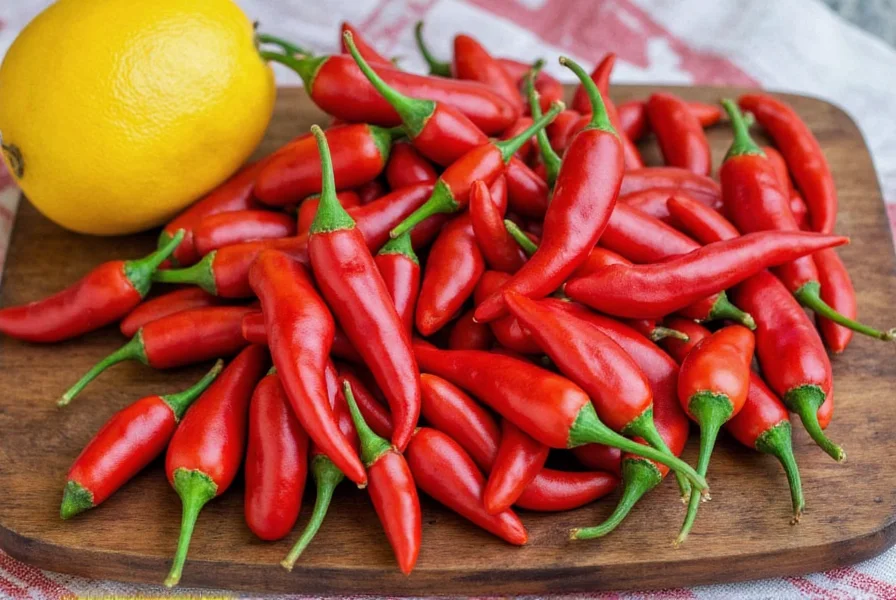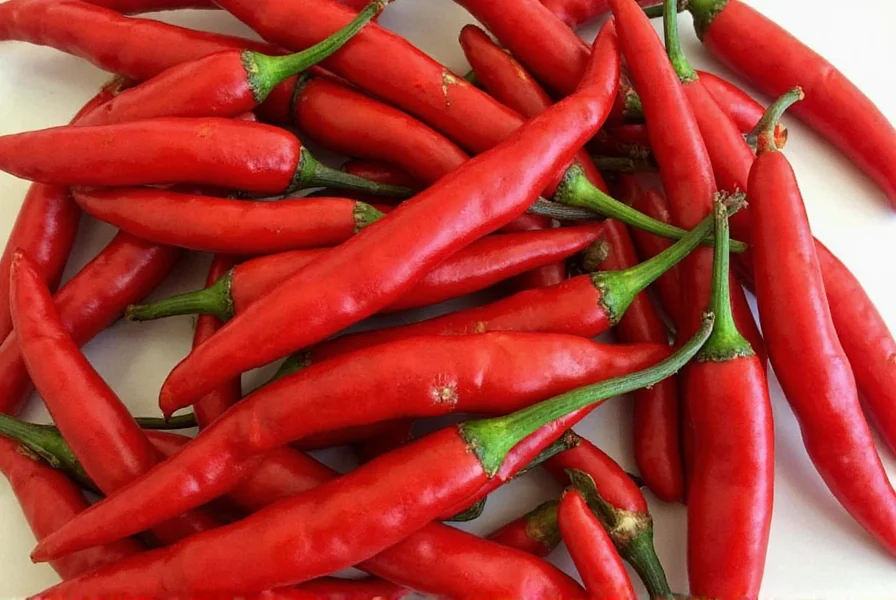7 Sizzling Secrets of Cascabel Chili: From Spice Lovers to Culinary Pros!
If you’ve ever walked into a Mexican kitchen and caught a whiff of something earthy, nutty, and just a little smoky — chances are, there’s a cascabel chili hiding in the mix. Known for its unique flavor profile and signature rattle, this small but mighty chili has been a staple in Latin American cooking for centuries.
Table of Contents
- What is Cascabel Chili?
- Flavor Profile & Heat Level
- A Rich History Rooted in Tradition
- Culinary Uses Around the World
- 5 Pro Tips for Cooking with Cascabel Chili
- Buying Guide: How to Choose the Best Cascabel Chilies
- Tasty Recipes Featuring Cascabel Chili
- Final Thoughts
What is Cascabel Chili?
Cascabel chilies are small, round, and make a rattling sound when dry.
The cascabel chili, or *Capsicum annuum*, is a small, round chili pepper commonly used in Mexican cuisine. Its name, which means 'rattle' in Spanish, comes from the dried seeds inside that create a rattling sound when shaken. It's often sold dried, though it can be found fresh in some specialty markets.
Unlike the long, slender chilies like ancho or pasilla, cascabels have a plump, almost spherical shape. This visual difference is more than skin deep — their flavor sets them apart in both traditional dishes and modern fusion recipes.
Flavor Profile & Heat Level
Let’s talk about what makes the cascabel chili stand out: its flavor. It’s not overly hot, but it brings warmth with layers of complexity:
- Flavor Notes: Nutty, earthy, with hints of cocoa and tobacco
- Heat Level: Mild to medium (1,000–3,000 on the Scoville scale)
- Best Used In: Salsas, moles, stews, sauces, and marinades
| Chili Variety | Scoville Heat Units | Flavor Notes | Common Uses |
|---|---|---|---|
| Cascabel | 1,000–3,000 | Nutty, smoky, slightly sweet | Moles, salsas, soups |
| Ancho | 1,000–2,000 | Fruity, mild, sweet | Tamales, moles |
| Pasilla | 1,000–2,500 | Raisiny, chocolate-like | Enchiladas, sauces |
| Guajillo | 2,500–5,000 | Tea-like, berry undertones | Red sauces, adobo |
A Rich History Rooted in Tradition
The cascabel chili traces its roots back to pre-Columbian times in central and northern Mexico. Indigenous peoples used it not only for food but also for medicinal and ceremonial purposes. Archaeological evidence suggests that these chilies were cultivated alongside maize and beans, forming part of the ancient Mesoamerican triad of staple crops.
Cascabel chilies have been part of indigenous diets for thousands of years.
Today, they remain a key ingredient in regional specialties such as **mole de olla** and **pipián rojo**, a traditional red sauce made from ground pumpkin seeds and chilies. They are especially popular in the states of Durango, Jalisco, and Guanajuato, where local chefs pride themselves on using heirloom varieties passed down through generations.
Culinary Uses Around the World
While deeply rooted in Mexican cuisine, the cascabel chili has gained international fame, appearing in everything from gourmet sauces to cocktail infusions. Here are some ways global cooks are embracing this fiery gem:
- Mexican Tamales: Ground and mixed into masa dough for a warm, earthy bite
- Spanish-Style Stews: Simmered into rich broths for added depth
- Tex-Mex Fusion: Blended into chipotle-style burgers and grilled cheese
- Australian BBQ: Infused into oil-based marinades for smoked meats
- Japanese Izakaya: Powdered and sprinkled over skewered vegetables for a spicy kick
From Mexico City to Tokyo, cascabel chili spices up global plates.
5 Pro Tips for Cooking with Cascabel Chili
- Toast First, Then Soak: Toasting cascabels in a dry pan enhances their nutty aroma. After toasting, soak them in hot water for 20–30 minutes to soften before blending.
- Remove Seeds for Less Heat: The heat is concentrated in the seeds and veins. For milder flavor, remove them before use.
- Pair with Citrus or Vinegar: Their earthiness pairs beautifully with lime juice, apple cider vinegar, or tamarind paste to balance the richness.
- Use in Dry Rubs: Ground cascabel makes an excellent addition to spice rubs for grilled chicken or pork.
- Make Your Own Cascabel Chili Oil: Simply steep crushed dried chilies in olive or avocado oil for a few hours. Use as a finishing touch on soups, pizzas, or noodles.

Toasting cascabel chilies brings out their full flavor potential.
Buying Guide: How to Choose the Best Cascabel Chilies
Whether you’re shopping at a local market or ordering online, knowing how to pick quality cascabel chilies can elevate your cooking game. Here’s what to look for:
What to Look For
- Bright Color: Should be a deep mahogany red, not faded or pale
- Firm Texture: Dried chilies should feel sturdy but not brittle
- Rattle When Shaken: A good sign of maturity and proper drying
- No Mold or Moisture Spots: Indicates freshness and proper storage
Top Cascabel Chili Products Reviewed
| Product Name | Features | Advantages | Use Case | Who Should Buy |
|---|---|---|---|---|
| La Costeña Dried Cascabel Chilies | Packaged in a resealable bag, certified organic | Consistent flavor, easy to store | Homemade mole, salsa, or chili oil | Home cooks and spice lovers |
| Goya Cascabel Whole Peppers | Pre-washed and ready to use | Convenient for quick recipes | Quick salsas, tacos, enchilada sauce | Busy families and casual cooks |
| Sabra Organic Cascabel Chili Powder | Ground and sifted for smooth texture | Great for rubs, marinades, or sprinkling | Dry rubs, chili oils, infused salts | Chefs and grilling enthusiasts |

Various forms of cascabel chili available for purchase.
Tasty Recipes Featuring Cascabel Chili
Ready to bring some fire into your kitchen? Here are three crowd-pleasing recipes that highlight the cascabel chili’s versatility:
1. Cascabel Salsa Roja
- Ingredients: Dried cascabel chilies, tomatoes, garlic, onion, vinegar, salt
- Method: Toast and soak the chilies, then blend with roasted veggies for a rich, vibrant sauce.
2. Cascabel-Infused Chicken Tacos
- Ingredients: Chicken thighs, cascabel powder, cumin, lime, cilantro
- Method: Marinate the chicken overnight, then grill until golden. Serve with warm tortillas and slaw.
3. Cascabel Mole Sauce
- Ingredients: Cascabel chilies, almonds, sesame seeds, cinnamon, bread, chocolate
- Method: Fry and blend all ingredients into a thick sauce. Simmer until fragrant, then pour over meat or vegetables.
A rich cascabel mole sauce elevates any dish to restaurant-level flavor.
Final Thoughts
Whether you're a seasoned chef or just starting to explore the world of global spices, the cascabel chili deserves a spot in your pantry. With its rich history, complex flavor, and wide range of uses, it’s a true culinary gem waiting to be discovered.
So next time you’re eyeing those small, round peppers at the market, give them a shake — if you hear a rattle, you know you've found a real cascabel. Grab a handful, toast them up, and let your kitchen sing with the soul of Mexico and beyond.










 浙公网安备
33010002000092号
浙公网安备
33010002000092号 浙B2-20120091-4
浙B2-20120091-4